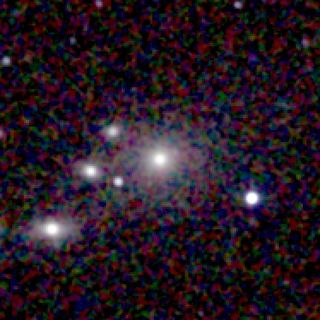
NGC 7012 is a large, bright elliptical galaxy located about 380 million light-years away from Earth in the constellation Microscopium. NGC 7012 was discovered by astronomer John Herschel on July 1, 1834.
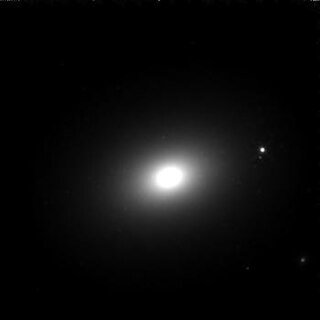
NGC 7014 is an elliptical galaxy located about 210 million light-years away from Earth in the constellation Indus. NGC 7014 was discovered by English astronomer John Herschel on October 2, 1834.

NGC 7016 is an elliptical or lenticular galaxy located about 480 million light-years away from Earth in the constellation Capricornus. NGC 7016's calculated velocity is 11,046 km/s. NGC 7016 has an estimated diameter of about 140 thousand light years. NGC 7016 was discovered by American astronomer Francis Preserved Leavenworth on July 8, 1885.

NGC 7038 is an intermediate spiral galaxy located about 210 million light-years away in the constellation of Indus. Astronomer John Herschel discovered NGC 7038 on September 30, 1834.

NGC 4482 is a dwarf elliptical galaxy located about 60 million light-years away in the constellation Virgo. NGC 4482 was discovered by astronomer William Herschel on March 15, 1784. It was rediscovered by astronomer Arnold Schwassmann on September 6, 1900 and was listed as IC 3427. It is a member of the Virgo Cluster.
Abell 3742 is a galaxy cluster located around 200 million light-years from Earth in the constellation Indus. The cluster's brightest member is the elliptical galaxy NGC 7014. Abell 3742 is located in the Pavo–Indus Supercluster and is one of three major clusters along with Abell 3656 and Abell 3698.

NGC 6045 is a barred spiral galaxy located about 450 million light-years away in the constellation Hercules. NGC 6045 was discovered by astronomer Lewis Swift on June 27, 1886 and is a member of the Hercules Cluster. It is also a LINER galaxy.

NGC 1267 is an elliptical galaxy located about 220 million light-years away in the constellation Perseus. NGC 1267 was discovered by astronomer Heinrich d'Arrest on February 14, 1863. NGC 1267 is a member of the Perseus Cluster and is possibly interacting with the spiral galaxy NGC 1268.

NGC 1273 is a lenticular galaxy located about 245 million light-years away in the constellation Perseus. It was discovered by astronomer Heinrich d'Arrest on February 14, 1863 and is a member of the Perseus Cluster.
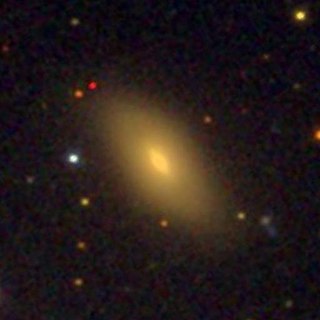
NGC 1274 is a compact elliptical galaxy located about 280 million light-years away in the constellation Perseus. NGC 1274 was discovered by astronomer Lawrence Parsons on December 4, 1875. It is a member of the Perseus Cluster.
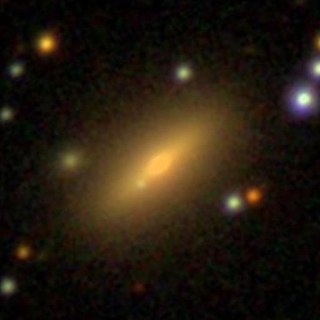
NGC 1271 is a compact elliptical or lenticular galaxy located about 250 million light-years away in the constellation Perseus. The galaxy was discovered by astronomer Guillaume Bigourdan on November 14, 1884. NGC 1271 is a member of the Perseus Cluster and has a nuclear dust disk in its center. It also has an edge-on, intermediate-scale disk and has a central bulge. Like NGC 1277, NGC 1271 is a candidate "relic galaxy".
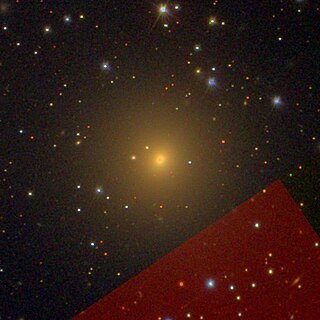
NGC 1272 is a massive elliptical galaxy located about 230 million light-years away in the constellation Perseus. It was discovered by astronomer Heinrich d'Arrest on February 14, 1863. NGC 1272 has an active nucleus and is the second brightest member of the Perseus Cluster after NGC 1275.

NGC 1282 is an elliptical galaxy located about 230 million light-years away in the constellation Perseus. It was discovered by astronomer Guillaume Bigourdan on October 23, 1884. NGC 1282 is a member of the Perseus Cluster.

NGC 1283 is an elliptical galaxy located about 250 million light-years away in the constellation Perseus. The galaxy was discovered by astronomer Guillaume Bigourdan on October 23, 1884 and is a member of the Perseus Cluster. It also contains an active galactic nucleus.

NGC 1293 is an elliptical galaxy located about 215 million light-years away in the constellation Perseus. It was discovered by astronomer William Herschel on October 17, 1786. NGC 1293 is a member of the Perseus Cluster.

NGC 1294 is a lenticular galaxy located about 285 million light-years away in the constellation Perseus. The galaxy was discovered by astronomer William Herschel on October 17, 1786 and is a member of the Perseus Cluster.

NGC 3558 is an elliptical or a lenticular galaxy located 440 million light-years away in the constellation Ursa Major. It was discovered by the astronomer Heinrich d'Arrest on April 15, 1866. It is a member of the galaxy cluster Abell 1185 and is classified as a LINER galaxy.

NGC 679 is an elliptical or a lenticular galaxy located 210 million light-years away in the constellation Andromeda. The galaxy was discovered by astronomer William Herschel on September 13, 1784 and is a member of Abell 262.

NGC 717 is a lenticular galaxy located 210 million light-years away in the constellation Andromeda. The galaxy was discovered by astronomer Bindon Blood Stoney on October 28, 1850 and is a member of Abell 262.

NGC 759 is an elliptical galaxy located 230 million light-years away in the constellation Andromeda. NGC 759 was discovered by astronomer by Heinrich d'Arrest on September 17, 1865. It is a member of Abell 262.



















